Danu, often shrouded in the mists of Celtic mythology, remains an enigmatic figure with an elusive presence in ancient texts. Despite her scant direct mention in primary Irish mythological sources, Danu is recognized as a profoundly significant deity, embodying the essence of motherhood, fertility, and the ancestral lineage of the gods themselves. Her name is intrinsically linked to the Tuatha Dé Danann, translating to the “People of the Goddess Danu,” a legendary group of deities, heroes, and skilled beings who play pivotal roles in Irish myth. This connection underscores her importance, not merely as a deity but as a foundational figure in the mythological hierarchy and cultural identity of the Celts. Danu’s presumed attributes and the reverence with which she was held hint at a deeply rooted veneration, suggesting her role as a symbol of the earth’s bounty, wisdom, and the nurturing force behind the natural and divine worlds. Her relevance stretches beyond the confines of Irish mythology, touching the broader expanse of Celtic culture and leaving an indelible mark on the landscape, language, and spiritual lineage of the Celtic people.
Contents
Etymology and Names
The etymology of Danu’s name is a subject of fascination and debate among scholars, blending linguistics with mythology to unravel the origins of this enigmatic figure. The name Danu itself is a reconstruction, derived from the genitive form Danann found in the collective name Tuatha Dé Danann. This linguistic analysis suggests a name deeply rooted in the Celtic linguistic tradition, yet its exact meaning remains speculative, illuminating the challenges of piecing together the past from the fragments left behind.
Danu has been known by various names and titles across different cultures, reflecting her widespread influence and the shared heritage of Indo-European mythologies. In Welsh mythology, she is paralleled by Dôn, a mother goddess figure, indicating a pan-Celtic reverence for a maternal deity. The name’s possible connection to the Proto-Indo-European root *dʰenh₂-, meaning “to run, to flow,” suggests an ancient link to water, rivers, and fertility, a common attribute of mother goddesses across various cultures. This linguistic thread weaves through the mythology of the Danube River, whose name may share the same ancient roots, highlighting the fluid connection between geography, language, and divine personification.
Other interpretations of Danu’s name explore different linguistic pathways. Some theories propose a link to the Old Irish word dán, meaning “skill” or “craft,” a reflection of the Tuatha Dé Danann’s renowned expertise in arts and crafts. Another perspective suggests an etymological connection to the concept of wisdom or bounty, fitting attributes for a goddess believed to embody the earth’s fertility and the wellspring of knowledge.
Through the various names and interpretations of her etymology, Danu emerges as a multifaceted deity, her identity layered with meanings that echo the flowing waters, the fertile land, and the skilled hands of her people. This exploration into the origins of her name not only sheds light on Danu’s character but also on the rich tapestry of Celtic mythology, where language, landscape, and divinity intertwine.
Mythological Origins
The mythological origins of Danu, while enigmatic, weave a complex tapestry of interconnected beliefs spanning the vast expanse of Celtic and Indo-European traditions. Danu’s presence in Irish mythology, primarily inferred through her association with the Tuatha Dé Danann, positions her not just as a deity but as a primordial figure, a personification of the earth, fertility, and perhaps the very essence of life itself. This lack of direct mention in primary sources has not diminished her significance; rather, it has opened a field of scholarly conjecture that ties her to a broader narrative of ancient mother goddesses.
The hypothesized connections between Danu and other mother goddesses across Indo-European mythologies rest on shared attributes and linguistic roots, suggesting a common ancestral deity or at least a shared conceptual framework. For instance, the Vedic goddess Danu, mentioned in ancient Indian texts, shares more than just a name; she is associated with waters and fertility, echoing the fertile and nurturing aspects attributed to the Celtic Danu. This parallel extends into the Proto-Indo-European *dʰenh₂-, a root denoting flowing water, which surfaces in various linguistic forms across Indo-European languages, underlining the widespread motif of the mother goddess as a life-giving, nurturing force.
In Celtic territories, the reverence for mother goddesses manifested in various local deities, with attributes and functions that often overlapped with those ascribed to Danu. This suggests a pan-Celtic veneration of the earth mother archetype, of which Danu is a central figure. Her speculated role in Irish mythology, as the mother or progenitor of the gods, mirrors the functions of other earth mother deities in Indo-European pantheons, who are often depicted as the source of all life and bearers of wisdom and prosperity.
The potential connections to Welsh mythology, through the figure of Dôn, further highlight the cross-cultural currents within the Celtic world. Like Danu, Dôn is a mother goddess, a foundational figure from whom a lineage of deities emerges. These cross-references underscore a shared mythological heritage that spans the Celtic isles, tying together the lore of different tribes and regions through common themes of creation, fertility, and divine ancestry.
Danu in Irish Mythology
In the rich tapestry of Irish mythology, Danu holds a paradoxical position of immense significance despite her almost spectral absence from primary texts. This intriguing discrepancy has led scholars and enthusiasts alike to piece together her presence and importance largely through indirect references and later interpretations. Central to understanding Danu’s place in Irish lore is her connection to the Tuatha Dé Danann, the “People of the Goddess Danu,” a lineage of deities, heroes, and skilled artisans who form a core part of the Celtic mythological pantheon.
The absence of Danu from the primary mythological narratives, such as the “Lebor Gabála Érenn” (The Book of Invasions) and other early texts, poses a unique challenge. It forces a reliance on linguistic reconstruction, comparative mythology, and the analysis of cultural practices to understand her role. This void in the literature has not diminished her perceived importance; rather, it has elevated Danu to a more foundational status, as the progenitor of the divine and heroic beings that inhabit the Irish mythical landscape. Her absence suggests a deity so ancient and integral to the Celtic understanding of the world that her presence permeates the mythological narrative without needing explicit mention.
The implications of Danu’s absence in primary texts are profound, hinting at a deity whose influence and reverence predate the written accounts of the mythology itself. This has led to a broader interpretation of her role as not just a mother of gods but as a symbol of the land itself—its fertility, sovereignty, and the source of life for all its inhabitants. The very name of the Tuatha Dé Danann, enshrining her identity, indicates her central importance to the Celtic cosmology and the ancestral memory of the Irish people.
Danu’s Attributes and Associations
The attributes traditionally ascribed to Danu paint a picture of a deity deeply entwined with the natural world and its cycles. As a goddess of fertility, Danu is believed to embody the earth’s fecundity, its capacity to nurture life in abundance. This association extends to wisdom, reflecting an understanding of the earth not just as a source of physical sustenance but also of spiritual and esoteric knowledge. The element of water, vital for life and a symbol of renewal and flow, is also strongly linked to Danu, further emphasizing her role as a life-giving force.
Rivers, in particular, hold a special significance in the lore surrounding Danu. The River Danube, one of Europe’s most significant waterways, is often cited in discussions of her influence, suggesting a pan-European deity whose essence is carried by the continent’s flowing rivers. This connection to waterways underscores Danu’s role as a sustainer of life and civilization, providing a natural and cultural link across the diverse landscapes inhabited by the Celtic peoples.
The land itself, with its sacred sites and natural features, is imbued with Danu’s presence. The Paps of Anu, a pair of breast-shaped hills in County Kerry, Ireland, are often cited as a physical manifestation of Danu’s nurturing aspect, a testament to her as a mother goddess. These geographical associations highlight the deep connection between Danu and the Celtic reverence for the land as a living, sacred entity.
Danu’s relationship with the Tuatha Dé Danann encapsulates her broader associations within the Celtic mythological framework. As their divine progenitor, she is intrinsically linked to their attributes of skill, magic, and knowledge. The accomplishments and qualities of the Tuatha Dé Danann—ranging from craftsmanship to wisdom and magical prowess—are reflective of Danu’s encompassing influence. Through her offspring, Danu’s attributes permeate the Irish mythological narrative, her essence woven into the very fabric of the land and its legendary inhabitants.
Through the combined lens of her mythological role and the natural and cultural associations ascribed to her, Danu emerges as a foundational figure in Irish mythology. Her attributes and associations paint a picture of a goddess who is both a source of life and a symbol of the land’s enduring strength and wisdom, her presence a unifying thread in the rich tapestry of Celtic mythology.
The Tuatha Dé Danann and Danu
The relationship between Danu and the Tuatha Dé Danann is central to her significance within Irish mythology, embodying the deep connections between deity, people, and land that characterize much of Celtic spiritual tradition. Danu is revered as the ancestral mother of the Tuatha Dé Danann, a pantheon of gods, goddesses, and heroic figures who play pivotal roles in the mythic history of Ireland. This lineage of divine and semi-divine beings is often depicted as possessing superior skills, magic, and knowledge, attributes that reflect their descent from Danu, a goddess of fertility, wisdom, and water.
The mythological narratives that link Danu to the Tuatha Dé Danann are more implicit than explicit, traced through etymological ties and the thematic resonance of the stories rather than detailed genealogies or sagas. The very name Tuatha Dé Danann, translating to “the People or Tribe of the Goddess Danu,” signifies a divine heritage and underscores the deep bond between the group and their progenitor. This connection imbues the Tuatha Dé Danann with a sense of sacred purpose and divine favor, legitimizing their rule and actions within the mythological framework of Ireland.
As their progenitor, Danu is seen not just as a source of life but also as a protector of her offspring and their endeavors. This protective aspect is less about martial prowess and more about the sovereignty and fertility of the land, which sustains and empowers the Tuatha Dé Danann. Through Danu, the land itself becomes a participant in the mythic narrative, providing the setting and the stakes for the legendary battles and feats of the Tuatha Dé Danann.
Danu’s Legacy and Modern Interpretations
In contemporary culture, particularly within modern neopagan traditions, Danu has been embraced as a symbol of feminine power, fertility, and wisdom. This resurgence of interest in Danu reflects a broader revival of Celtic spirituality and a quest for connections with ancient wisdom and earth-centered belief systems. Modern interpretations often emphasize Danu’s role as a mother goddess, drawing parallels between her nurturing aspects and the ecological challenges facing the modern world. This has led to Danu being seen as an emblem of environmental protection and stewardship, her association with water and the land highlighting the importance of natural resources and the interconnectedness of all life.
Within neopaganism, Danu is venerated as part of a wider pantheon of Celtic deities, her attributes and stories adapted to fit contemporary spiritual practices and worldviews. Rituals and ceremonies often invoke Danu for blessings of abundance, wisdom, and guidance, reflecting her traditional attributes but contextualized within modern existential concerns and values. Danu’s imagery and symbols, such as rivers, the earth, and maternal figures, are used in meditative practices and artistic expressions, serving as focal points for spiritual connection and inspiration.
The adaptation of Danu’s mythology in contemporary culture extends beyond religious practice into popular media, literature, and art. She has become a figure of inspiration for those seeking to reconnect with ancestral roots or to explore alternative spiritualities that honor the feminine divine and the natural world. This modern reinterpretation of Danu underscores the fluid nature of mythology, its capacity to evolve and resonate with successive generations, each finding in these ancient narratives reflections of their own challenges, aspirations, and beliefs.
Comparative Mythology
The figure of Danu in Irish mythology offers a fascinating lens through which to explore the archetype of the mother goddess, a motif that recurs across various cultures and mythological traditions around the world. Through a comparative analysis, we can discern the unique aspects of Danu’s mythology as well as the universal themes she shares with mother goddesses from other cultures.
Danu and Gaia (Greek Mythology): Gaia, the personification of the Earth in Greek mythology, shares several core attributes with Danu, particularly in her role as a progenitor of the gods and natural entities. Both goddesses symbolize the Earth’s fertility and are considered foundational figures within their respective mythologies. However, Gaia’s mythology is more explicitly detailed in Greek texts, with specific stories describing her interactions with her offspring and other deities, unlike the more enigmatic mentions of Danu.
Danu and Durga (Hindu Mythology): Durga, a warrior goddess who embodies motherhood and protection in Hindu mythology, offers a contrast to Danu’s largely peaceful and nurturing image. While Durga is often depicted in a fierce battle against evil forces, protecting her devotees, Danu’s association with war and protection is more implicit, seen through her connection to the Tuatha Dé Danann, known for their magical and martial skills. Both goddesses, however, are revered as powerful maternal figures who embody the essence of life and protection.
Danu and Anu (Sumerian Mythology): Anu, a sky goddess in Sumerian mythology, shares the trait of primordial significance with Danu. Both are considered ancient deities from whom other gods descend. However, Anu’s domain as a sky goddess contrasts with Danu’s earth and water associations, highlighting the diverse environments from which mother goddesses emerge in different mythologies.
Theories and Debates
The origins and role of Danu in the Celtic pantheon have sparked various theories and debates among scholars, reflecting the complex interplay of linguistics, archaeology, and comparative mythology in the study of ancient religions.
Linguistic Theories: Some linguists propose that Danu’s name derives from the Proto-Indo-European root *dʰenh₂-, meaning “to run, to flow,” suggesting an original association with water or rivers. This theory aligns Danu with other water-associated deities across Indo-European cultures, positing a common ancestral tradition of river or water goddess worship.
Archaeological Correlations: Archaeologists have explored the possibility of linking Danu to specific prehistoric sites or artifacts in Ireland and across Celtic Europe, suggesting that worship of a mother goddess akin to Danu could have predated the arrival of the Celts. However, direct evidence connecting Danu to specific archaeological finds remains elusive, leading to ongoing debate.
Cultural and Mythological Connections: Scholars have debated Danu’s relationship to other deities within the Celtic pantheon, such as Anu or the Morrígan, considering whether these figures represent different aspects of a single mother goddess or are distinct entities. Comparative mythology has been employed to explore parallels between Danu and mother goddesses in neighboring cultures, seeking to understand the diffusion of mythological motifs and the potential for shared cultural heritage.
Geographical Associations: The naming of geographical features, such as rivers and hills, has been examined for clues to Danu’s worship and significance in ancient Celtic societies. The debate over whether the River Danube is named after Danu exemplifies the challenges in tracing the goddess’s influence across the shifting landscapes of ancient Europe.
Danu in Popular Culture
The ancient figure of Danu, while rooted deeply in Celtic mythology, has found her way into various facets of modern media, showcasing her enduring appeal and cultural significance. From literature to video games, Danu’s presence underscores a contemporary fascination with mythological themes and the enduring power of ancient deities in the collective imagination.
Literature: In the realm of fantasy literature, Danu often appears as a symbol of wisdom, nature, and magic. Authors have been inspired by her mythological background to craft characters and narratives that reflect her attributes, weaving her into stories that range from direct retellings of Celtic myths to more subtle incorporations into fantasy worlds. Her figure serves as a source of inspiration for themes of fertility, nature’s bounty, and the mystical connection between the land and its people.
Television: Danu’s influence extends to television, where she may be referenced in programs that delve into mythology, history, or the supernatural. Though direct portrayals are less common, her essence can be felt in characters and storylines that echo the themes of motherhood, protection, and elemental powers, often serving as a guiding force or a symbol of ancient wisdom in narrative arcs that explore the mystical and the mythical.
Video Games: The interactive world of video games offers a unique medium for Danu’s mythos to be explored and experienced firsthand. Games that draw upon Celtic mythology sometimes feature Danu or the Tuatha Dé Danann, allowing players to engage with her legacy through quests, storylines, or as a deity offering powers and blessings. This not only entertains but educates players about Danu’s role in myth, emphasizing her significance in a modern context.
Music: In the music industry, Danu has inspired bands, songs, and albums, particularly within genres that celebrate Celtic heritage and folklore. Her name and imagery can evoke themes of nature, ancestral ties, and spiritual connection, resonating with listeners who are drawn to the mystical and the ancient. Bands specializing in folk, new age, and world music often pay homage to Danu, using her as a muse for compositions that seek to capture the essence of the Celtic tradition.
Cultural Festivals and Neo-Pagan Celebrations: Danu’s influence is palpable in cultural festivals and neo-pagan celebrations, where she is honored as a deity of fertility, wisdom, and the earth. These events often feature rituals, artistic performances, and storytelling sessions that celebrate Danu’s mythology, connecting participants with the ancient traditions and beliefs of the Celtic peoples.
Conclusion
In weaving together the myriad strands of myth, culture, and scholarly inquiry surrounding Danu, we uncover a portrait of a deity whose essence transcends the limitations of direct textual evidence to touch the core of Celtic spirituality and identity. Danu, as the hypothesized mother of the Tuatha Dé Danann and the embodiment of the land’s fertility, wisdom, and flowing waters, stands not only as a pivotal figure in Irish mythology but also as a symbol of the enduring power and mystery of nature itself. Her comparative absence in the primary texts of Irish mythology paradoxically amplifies her significance, positioning her as a deity whose influence is so foundational that it permeates the cultural and spiritual landscape without the need for explicit narrative detail.
The exploration of Danu’s attributes and associations, her relationship with the Tuatha Dé Danann, and the comparative analysis with mother goddesses from other cultures reveal a complex tapestry of belief that underscores the universality of the mother goddess archetype while highlighting the unique expressions of this motif within Celtic mythology. Scholarly theories and debates about Danu’s origins, her place within the Celtic pantheon, and her connections to the natural and mythological world further enrich our understanding of her role and significance, offering insights into the ways in which ancient peoples sought to understand and interact with the forces of nature and divinity.
Danu’s presence in modern popular culture, from literature and television to video games and music, attests to her ongoing cultural significance and the fascination she continues to inspire. These contemporary portrayals not only breathe new life into ancient myths but also reflect the enduring appeal of mythological figures who embody the timeless themes of life, nature, and the divine feminine.
In conclusion, Danu represents a profound link to the ancient past, a reminder of the deep connections between humanity and the natural world, and the enduring appeal of myths that seek to explain and celebrate these bonds. Her story, woven from the threads of myth, scholarship, and cultural expression, continues to inspire, challenge, and enchant, offering a window into the rich tapestry of Celtic mythology and the universal human quest to understand the mysteries of life and the cosmos.
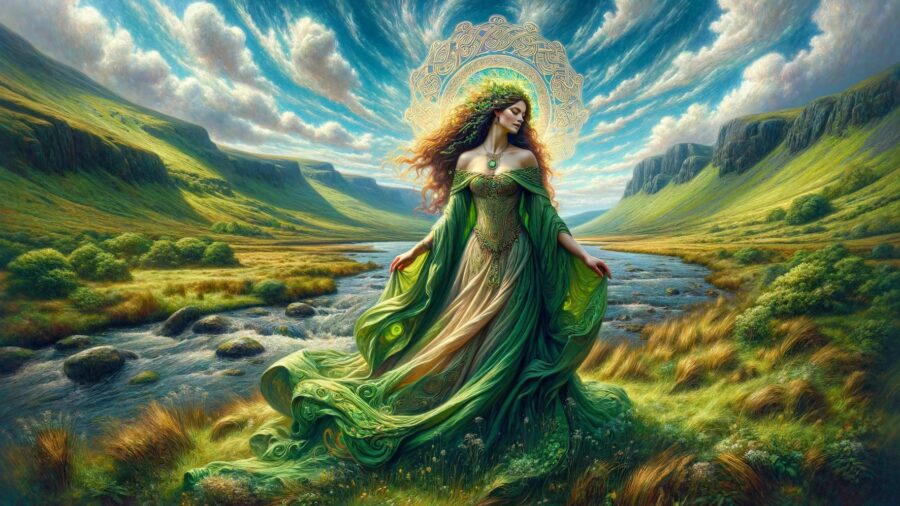


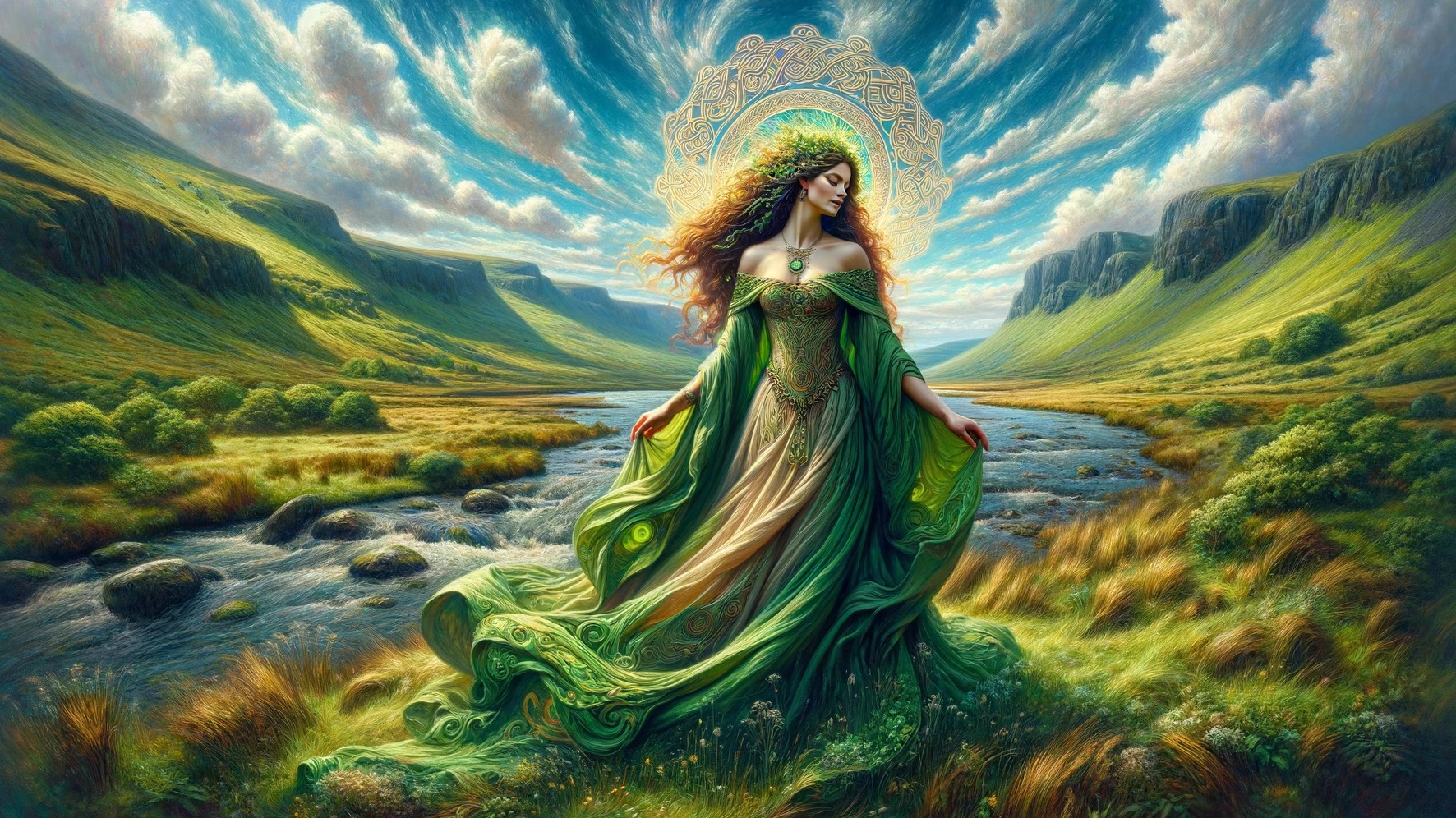
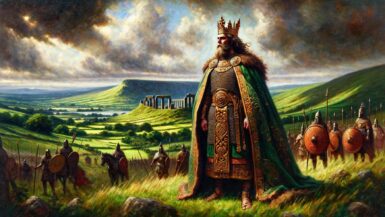
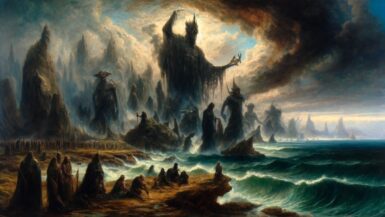
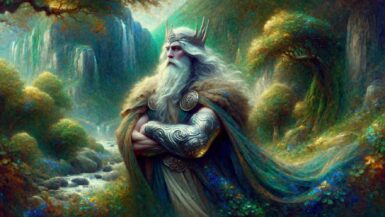
Leave a reply